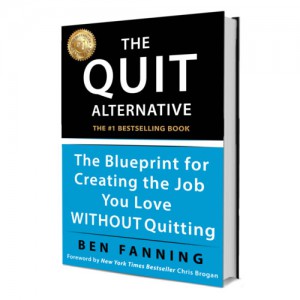By Ben Fanning, contributing editor | You can learn a lot about work burnout from poison ivy.
My neighbor once pointed out the itch causing, three-leaf plant at my daughter’s birthday party. I acted surprised that it was there, but really I just was embarrassed I hadn’t done anything about it yet. I’d seen it there before (I’m an Eagle Scout, for goodness sake), but it just seemed like it was too much trouble to deal with at the time.
I was too busy obsessing about the jump castle, the cake and the weather. Besides, it was buried in the corner of my yard, behind the shrubs. No one was going to get hurt, right?
Burnout starts small
Just like with poison ivy, burnout often starts small. First you notice a leaf or two; then it spreads quickly.
Burnout is often a seed that’s planted early on in your career, and it’s so easy to overlook. When you start off in your career, you may envision yourself on the executive track. You come blazing out of the college ready to get to work for the company, giving it your all and doing your best.
However, over time, it’s easy to get frustrated with the lack of promotions and missed opportunities. After you’ve experienced a few job transitions, it’s even easier to get frustrated because you start to see the same repeat issues at each company (and boss) you’ve worked for.
It’s easy to become jaded. Then the frustration can snowball into resentment, resignation and, finally, full-blown burnout.
Burnout spreads through exposure
Poison ivy looks like any other plant; it was often mixed in with kudzu where I grew up in Alabama.
My sister has an extreme sensitivity to it. In fact, my family used to say that she could just see poison ivy and start breaking out with a rash.
It’s just like that with burnout. When you’re in the proximity of burnout on a daily basis, it’s highly likely you’re going to burnout through exposure. If you’re in an environment that full of burned-out co-workers every day, it is going to impact you. If your co-workers are burned out, you’re at high risk.
Maybe you notice it first in the tired, uninspired faces you see at work. Then it starts to seem normal, and it gradually starts to rub off on you.
Tough to overcome
The longer poison ivy spreads, the tougher it is to get rid of. It has an underground vine system that makes it really difficult to rip out. And if you ever get wrapped up in it yourself, it’s almost impossible to escape unscathed.
The longer you let burnout go untended, the harder it can be to rekindle your passion for the job. The short-term solution for work burnout is to start looking for another job. It’s much easier to blame the job, the company, the boss and to crave immediate results. However, that doesn’t really address to root of the problem.
Burnout didn’t happen overnight, and it’s not realistic to expect everything to change immediately. The solution takes time. The good news is there are some immediate steps you can take to relieve burnout and get on the road to recovery.
A three-step cure for burnout
 If your concern about work burnout is giving you an itch to jump jobs, then I’ve got a few strategic tips to help.
If your concern about work burnout is giving you an itch to jump jobs, then I’ve got a few strategic tips to help.
1.) Notice the frustration – Maybe you’ve never gone as far as to say, “I hate my job,” but if you’re creating this perception to those closest to you, then you unknowingly may be in the early stages of work burnout.
Often your friends and family can see things that you’re unaware of. You can start by asking your family and friends an easy question: “Do you think I like my work?” If they answer “no,” then ask them to provide a few examples. These grounding examples can help you recognize if you are experiencing burnout.
2.) Strategize your breaks – If you’re burning out, you don’t have to take a two-week sabbatical to Argentina (although I highly recommend it).
Be strategic in how you handle your breaks and use them as a daily oasis to rejuvenate your energy levels. Do a quick evaluation of how you’re utilizing your lunch breaks or rethink how you’re getting your morning started.
3.) Surround yourself – Start identifying people who leave you feeling motivated and inspired about work. Try thinking about the conversations you’ve had the last few days. Which conversations left you feeling uplifted and which ones drained your energy?
Next, look through your calendar over the next two to three days. Notice which ones you’re looking forward to and which ones you’re dreading. From these two quick exercises, begin formulating a list of people you’d like to spend more time with and that give you a positive burst. Plan your schedule accordingly.
The rest of the story
Fortunately, no one got into the poison ivy at the birthday party. Also, it turned out that once I found the right person to help, it wasn’t that bad. I found an expert that knew exactly what to do.
And you’ve got one on burnout. Download the 21 warning signs of burnout and the solution here.
- Have a general comment? Send to: editor@charlestoncurrents.com.





 We Can Do Better, South Carolina!
We Can Do Better, South Carolina!
























